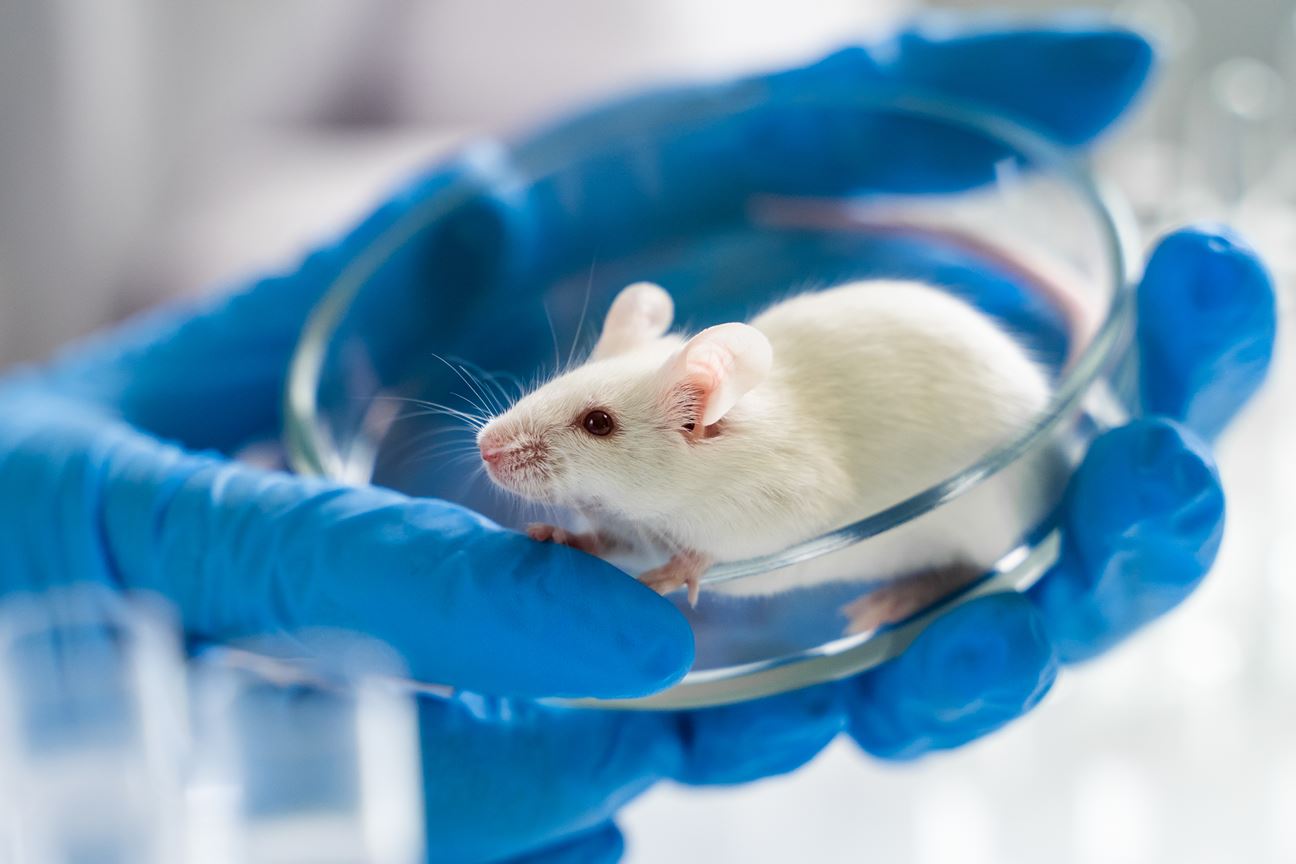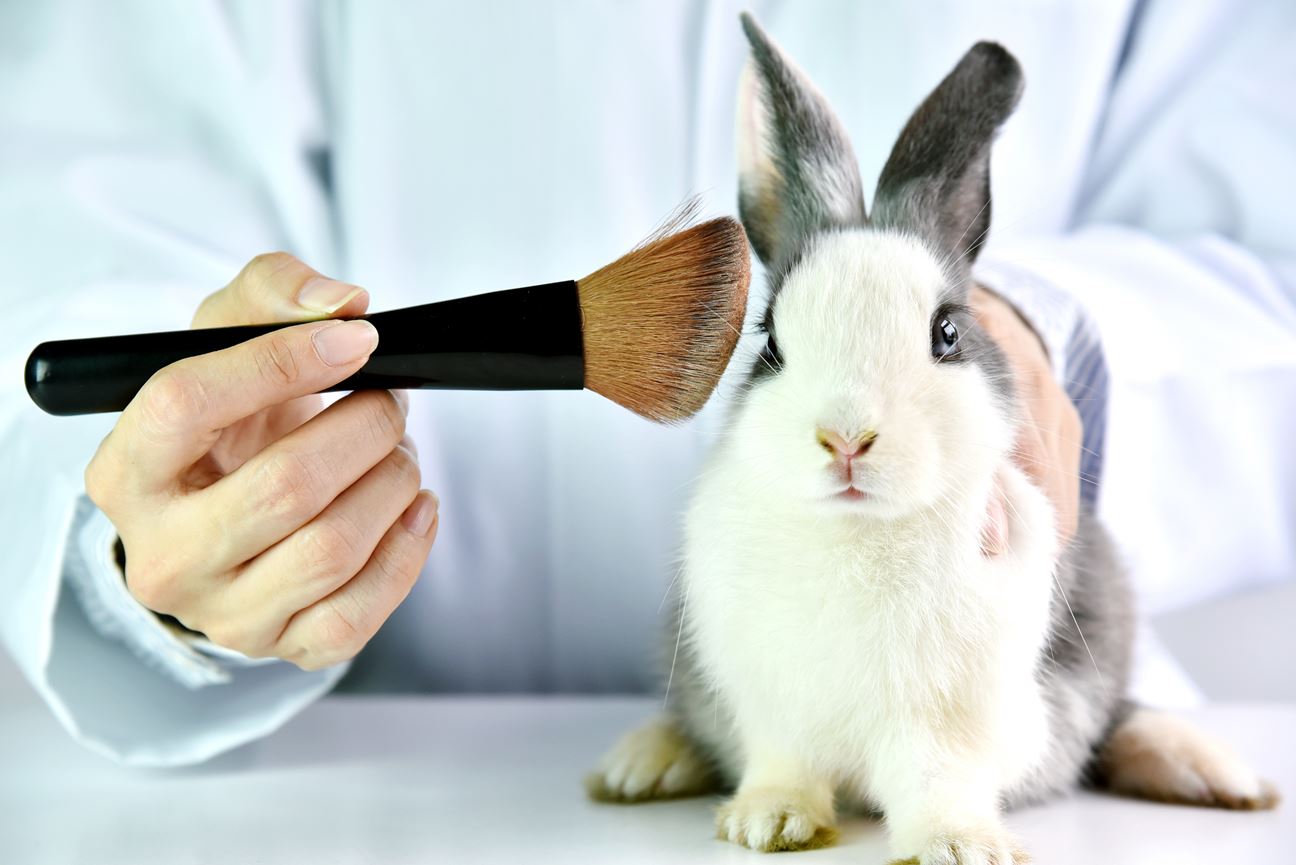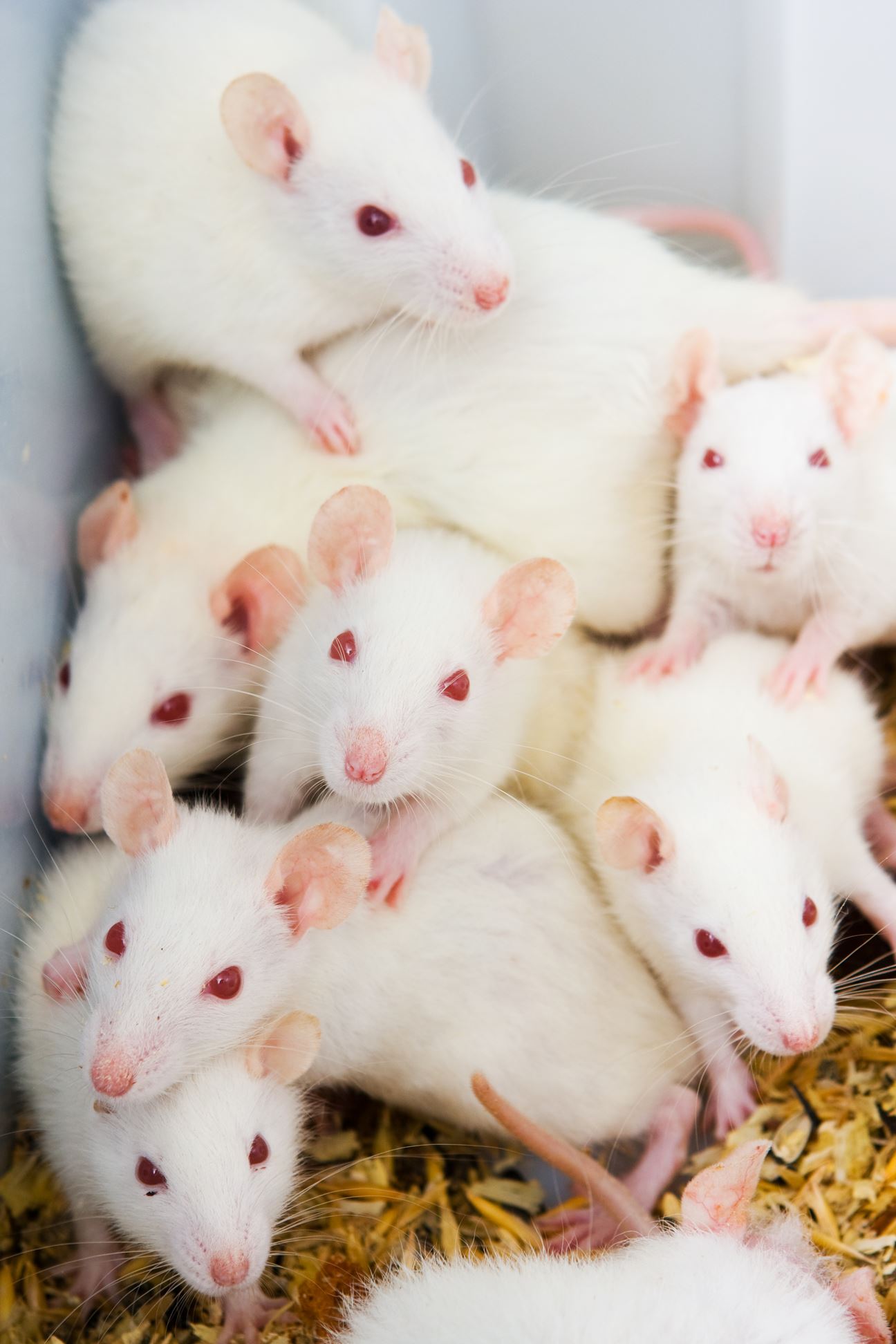The tales of the pain endured by laboratory animals are horrifying, but awareness and campaigning in recent years is giving these animals a gleam of hope.
(TW: Animal Suffering)
Throughout history, human beings have shared a close connection with animals. And have used them for a variety of purposes: from companionship to transportation, sports, and recreation. However, there is one more area where humans use animals — a rather debatable one — and that is in research and medical and chemical testing. Nations around the world practice this traditional approach when developing a new drug or a surgical technique to test its safety and efficacy among other purposes. Because most will agree that it is unethical to test it on humans first.

Animal testing, also called Vivo testing, enables the researchers to compare the effects of clinical experiments on animals that are biologically similar to human beings. Animals used for testing often have no control over any aspect of their lives. Most are born in captivity and spend the rest of their lives in isolation and deprivation. They undergo experiments — often frightening and disturbing. Unfortunately, many of these practices are poorly regulated and are carried out with no restrictions. Animals used in research laboratories undergo complications from purpose-breeding, gavage, and euthanization at the end of the experiment. And so, this honourable day came into being.
The Need to Observe the World Day for Laboratory Animals:
The World Day for Animals in Laboratories calls to attention the pain and suffering of millions of such animals. Around the world, animals are used as subjects in experiments that would be impossible to replicate in human subjects. Most animals spend their entire lives in labs, where they undergo fear, stress, and pain. This day also advocates 'research and testing without animals’ and ideas for alternatives to animal testing. The surrounding week is also celebrated as 'World Week for Animals in Laboratories'.
History of Lab Animal Day:
In 1875, Miss Frances Power Cobbe, an anti-vivisection activist, founded an organisation that campaigned against the use of animals in laboratory experiments. The first of its kind, the National Anti-Vivisection Society (NAVS) observed 'World Day for Laboratory Animals' for the first time on 24 April 1979. This day coincides with Lord Dowding’s birthday, an anti-vivisectionist himself. Lab Animal Day was later recognised by the United Nations, and it is now annually observed by anti-vivisectionists from all over the world.
Organisations such as the Lord Dowding Fund for Humane Research (LDF) and Animal Defenders International (ADI) fund and promote the use of non-animal methods in the field of consumer product and medical research.
That being said, let us look at what animals are used for experimentation, areas of animal use, what goes on in the laboratories, and if alternative approaches are possible.
What Is Animal Experimentation?
Animal experimentation includes the manipulation of animals through physical, mental, and emotional injuries for research and testing. These animals are used for basic, translational, and applied research for the prevention, detection, diagnosis, and treatment of diseases in humans. Medical research requires resolving previously unknown biological reactions and processes. These experiments, if conducted directly on humans first, would be termed unethical and even illegal in some countries. And so, animals that are genetically similar to humans undergo these experiments. Examples of different experiments include testing the efficacy of drugs, chemical testing of cosmetics, development of biomedical experiments through tissue cultures, organ extraction, and forensic investigations.
What Animal Species Are Used?
Small mammals such as mice, pigs, primates, and birds and fish are routinely used in laboratories for testing and research purposes. Here are some of the most common lab animals:
- Chimpanzees - As the only nonhuman great ape species, chimpanzees have been used in labs for biomedical research. They have been subjected to test vaccines and develop treatments for hepatitis. The good news is, the use of chimpanzees in research has drastically reduced in recent years.
- Non-Human Primates - Examples include rhesus macaques, squirrel monkeys, and baboons among many others. They are widely used in medical research given their physiological and psychological similarity to human beings. These primates are used as subjects for experimentation ranging from pharmaceutical research to bioterrorism.
- Mice - One of the most commonly used animals in modern research is the mouse. They are often genetically modified and bred in labs. The nervous systems of mice and rats are similar to human beings, and so the use of mice in the field of genetic engineering only keeps growing. Laboratories even order custom-made mutants or strain of mice as per the experimentation.
Guinea Pigs and Hamsters - Apart from medical research, guinea pigs and hamsters are extensively used in testing the toxicity and safety of substances like alcohol, drugs, cigarettes, and cosmetics. They make up to 85% of all animals used in studies. Hamsters, especially, are used as models to study sensory responses for experiments including inflammatory diseases, cardiopulmonary diseases, pancreatic cancer, and carcinogenesis among others.
Rabbits - Rabbits are docile, easy to maintain and breed recklessly. They are used only second to guinea pigs in the area of research and testing. Studies associated with toxicity and safety testing for cosmetic and personal use products mostly use rabbits. In medical research, rabbits are mainly used to test pyrogenicity (the chances of a drug-induced fever) and embryotoxicity (the chances of a drug harming a pregnant female and/or a developing fetus)
Dogs - Dogs used in biomedical research are purpose-bred. Given their small sizes, beagles are the most commonly used dog species for animal experimentation. They are used in studies related to cancer, orthopaedics, and cardiovascular and lung disease. Dogs are also used to test the maximum tolerated dose when developing a new drug before the human trials start. They are also used to test the toxicity of industrial chemicals but rarely used in the testing of personal products.
- Cats - Cats are predominantly used in the field of neuroscience research with studies related to Parkinson’s disease, spinal cord injury, epilepsy, and ailments related to vision and hearing. Cats are also used in HIV/AIDS research given the similarity between AIDS virus and feline viruses such as feline immunodeficiency virus (FIV) and feline leukaemia virus (FeLV). Most recently, cats were also used in developing and testing COVID-19 antiviral drugs. GC376, a drug used to treat feline infectious peritonitis (FIP) in cats, has shown to hinder the replication of coronaviruses in cells.
Animal Experimentation: Areas of Use
Let us understand some experiments and areas of practice that use animals as models.
- Basic and Applied Medical Research - Basic research includes using laboratory animals to gain insights and knowledge regarding biological and life processes in human beings. These experiments usually require the use of cell cultures that undergo manipulation to measure a biochemical response in cells. Animal cells are also used to understand the role of pathogens like bacteria and viruses in spreading infectious diseases. Interaction between the pathogens and their host cells help determine the targeted treatments. Applied or medical research is just an extension of basic research. Experiments can include injecting animals with pathogens and then trying out different drug combinations until a cure is found. Tissue transplantation, organ replacement, and development of new surgical techniques experiments are largely performed on lab animals first.
- Diagnostics - The advancement in medical science has led to an increase in life expectancy, but there are still many diseases that can be treated only symptomatically. Animal models are used in sensitive diagnostic procedures like X-rays, ultrasound, computer tomography (CT) scans, and positron emission tomography (PET) scans among others.
- Cosmetic Testing - Many cosmetic companies are known to test their products on animals before releasing the product in the market. What goes into the making of these products are heavy metals like cadmium, arsenic, and lead, plus many hazardous chemicals like formaldehyde, parabens, and phthalates. The purpose of these experiments is to ensure that the ingredients used in making the product do not cause a reaction and are safe for human usage.
 Cosmetics being tested on rabbit in a laboratory
Cosmetics being tested on rabbit in a laboratory
- Experimental Pharmacology - Whenever a new drug is under development, animals are used as a part of preclinical and clinical studies to ensure that the drug is suitable for public health. One of the experiments includes the testing of chemicals on animals to rule out any acute toxicity.
Do Animals Suffer in Labs?
In one word - yes. Most animals used in research laboratories undergo many painful procedures in a highly controlled environment - with little to no scope of escaping. One common type of experiment is the median lethal dose (LD50). It includes administering consecutive test doses until half of the test population dies. Lab animals are subjected to unquestionably cruel experimentation and animals are known to experience complications like tremors, seizures, diarrhoea, vomiting, difficulty in breathing, abdominal bloating, rectal prolapse, and paralysis among others. Force-feeding of the test substance also causes distress in animals. The gavage includes restraining the animal, followed by inserting a tube directly in the stomach. These trials can happen multiple times in a day, and continue over a period of days, even weeks. These procedures not only cause bodily harm, but the violation and deprivation can lead to emotional, cognitive, and psychological complications in lab animals.
 White Mice waiting kept in a confined space, ready for experimentation
White Mice waiting kept in a confined space, ready for experimentation
If the animal can survive leading up to the endpoint of the research, it is then euthanized through either inhalation of anaesthesia gas or carbon dioxide. Physical methods of euthanasia include cervical dislocation or decapitation.
Adopting Alternative Approaches
It is understandable that the researchers who perform animal experiments feel a constant conflict between the solidarity principle and their obligation towards reducing human suffering by making advances in medical science. Researchers have developed ways to replace animals in experimentation. And the search continues. Alternative approaches include a range of options - like reducing the number of animals in labs, designing more humane experiments, better pain management in animals, and replacing animals with computerised techniques.
The three Rs are used as a guiding principle in most countries. These are Replacement - to address important scientific and medical questions by replacing animals with science and technology, Reduction - to design experiments that are robust and reproducible, thus minimising the number of animals used in an experiment, and Refinement - to let go of the traditional methods and make use of the latest in vivo technologies to minimise animal suffering.
The goal of reducing suffering in laboratory animals can be achieved in the near future if researchers let go of certain animal studies. With the advent of new technology, we can certainly expect a reduction in the number of animals used in research and testing and eventually move towards large-scale replacements. Until that happens, better recognition of pain and regulated animal experimentation can elevate the standard of life of lab animals.
We owe our good health to all the animals that underwent painful experiments. And we all must start somewhere. By pledging to use only cruelty-free products, each one of us can contribute towards the prevention of pain and suffering caused by lab animals. Help educate your family and friends and encourage them to use chemical and consumer products that do not test on animals.